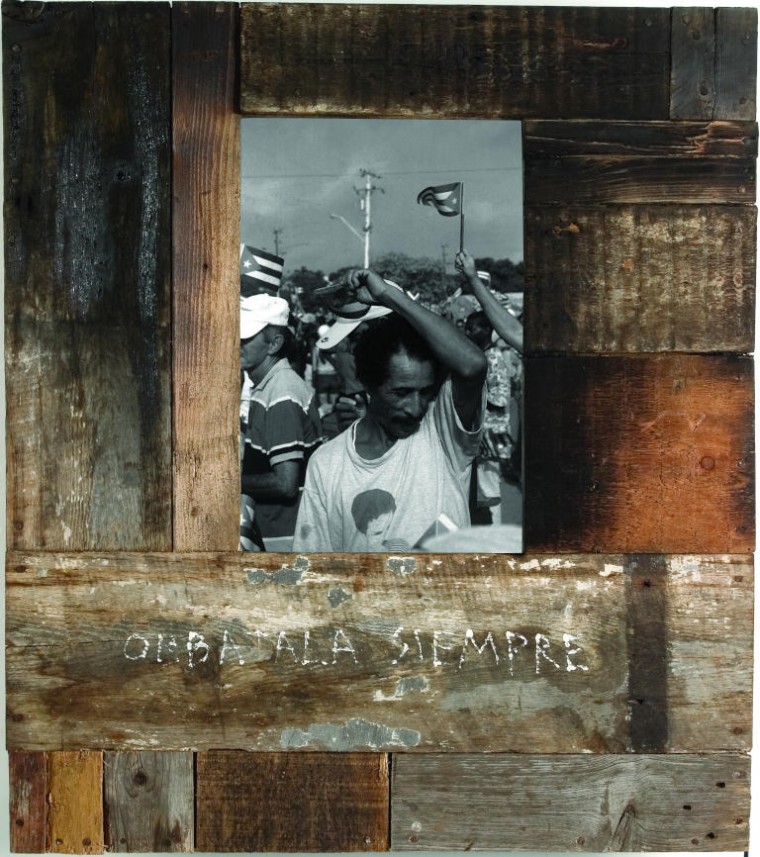Obbatalá Siempre
Obbatalá Siempre
In this series of photographic works, Diago centered on the people in his community. To capture the images, he walked through the city with his camera and introduced himself to people he found interesting. He would photograph them, show them the photograph and ask them to provide a title for their photograph. After printing the works for backlighting, Diago built the frames from the pieces of wood found in the communities where these people lived, scratching the titles they provided into the surface of the work like graffiti. The words in concert with the images of those represented reveal important layers of Cuban life that demystify the everyday lives of Cubans .
Obbatalá Siempre (Obbatalá Forever)
Please go to the work in this series titled Obbatalá Forever. In this work, you see a man engaged in what appears to be a national celebration with flags waving behind the central figure. However, in choosing to provide a title invoking Obbatalá, another reading of the image is possible. Despite outward appearance, the man is engaging in a joyous celebration in honor of Obbatalá, the creator god, who is an orisha in the Santeria religion, a Yoruba-based faith that reemerged in special form in the crucible of transatlantic slavery from Nigeria to Cuba.
Mi Risa (My Laughter)
In Mi Risa (My Laughter) you see the face of a man with scars resulting from untold violence, yet he exudes pure joy.
Yo te Quiero (I Love You)
The work Yo te Quiero (I love you) represents the beauty of love, friendship, and connection that emanates between the three women, the artist, and now you. , Through this work, Diago challenges the assumption that there is no joy possible in poverty and other forms of oppression.
Amigas (Female Friends)
Amigas continues the conversation of love and friendship begun in Yo te Quiero with an inter-generational and interracial group of women. Leaning into each other the women connect with each other and their direct gaze with the artist affirms their bond.
As a group, these images open our perspectives and humanize Cubans in ways that render them on more personal levels, beyond the rhetorical limits of revolution.
FUENTE: http://bycell.mobi/wap/default/item.jsp?entryid=ECMTkzNQ==&itemid=96780#m

